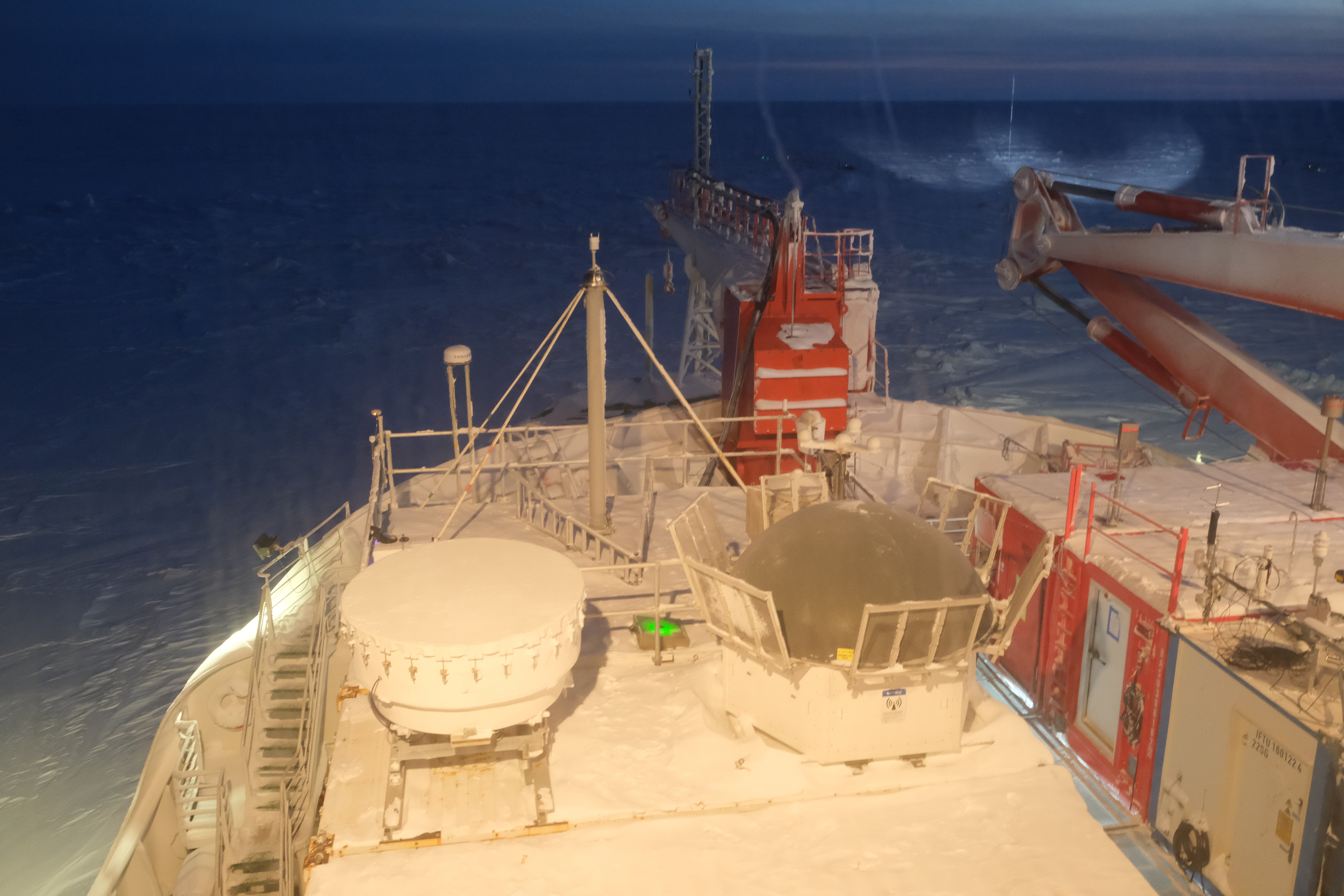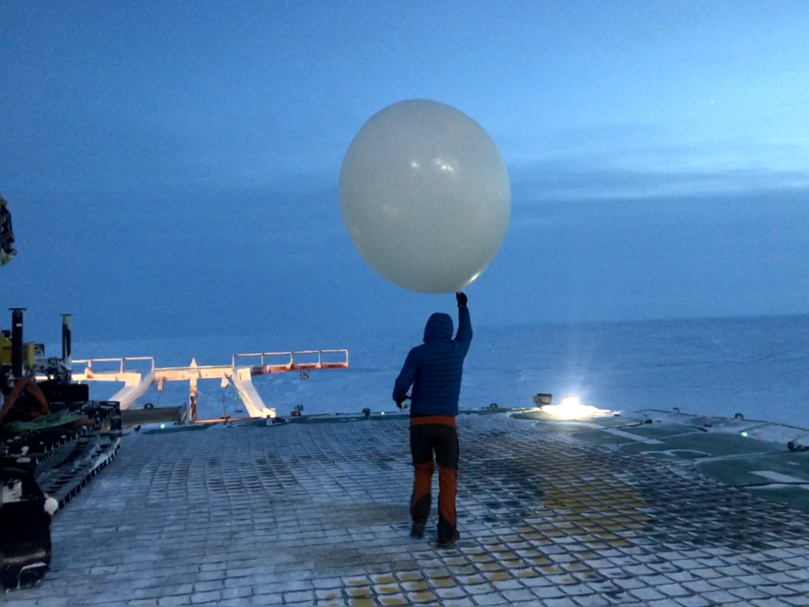Three New Value-Added Products Available for MOSAiC Expedition
Published: 27 September 2021

The Atmospheric Radiation Measurement (ARM) user facility released three new value-added products (VAPs) from the 2019–2020 Multidisciplinary Drifting Observatory for the Study of Arctic Climate (MOSAiC) expedition.
The three VAPs are Interpolated Sonde (INTERPSONDE), Ka-Band ARM Zenith Radar Active Remote Sensing of CLouds (KAZRARSCL), and Aerosol Optical Properties (AOP).
INTERPSONDE transforms sounding data from weather balloon (sonde) launches into continuous daily files on a fixed time-height grid. Standard ARM sounding files provide atmospheric state data in one dimension of increasing time and height per sonde launch. Many applications require a quick estimate of the atmospheric state at higher time resolution.
To address this need, INTERPSONDE is available at 1-minute time resolution, and the grid extends from the surface to 332 levels (40 kilometers) to capture the full height of soundings. (Most soundings end between 25 and 30 kilometers, above which no data are provided.) Between soundings, the VAP linearly interpolates atmospheric state variables, i.e., estimates values between two values in time for each height level. In addition, INTERPSONDE provides relative humidity scaled to microwave radiometer observations.
KAZRARSCL combines KAZR, micropulse lidar, ceilometer, sounding, and microwave radiometer input observations, and the VAP produces two datastreams. The arsclkazr1kollias datastream provides best-estimate radar reflectivities, mean Doppler velocities, spectral widths, and a significant detection mask in time and height. This datastream also provides up to 10 layers of cloud boundaries (cloud base and cloud top) and best-estimate cloud base. The smaller arsclkazrbnd1kollias datastream provides only cloud boundaries and cloud base. The MOSAiC KAZRARSCL product allows scientists to more easily use corrected observations from ARM’s vertically pointing cloud radar and to access hydrometeor masks and cloud boundaries for the entire expedition.

AOP contains, in a single file, most relevant intensive and extensive aerosol optical properties measured from in situ instruments. For MOSAiC, AOP combines light absorption data from a particle soot absorption photometer and scattering measurements from a nephelometer, and it calculates the aerosol optical properties at three wavelengths. Calibrations and corrections are applied to both the scattering and absorption data to yield a consistent data product with uniform application of literature corrections.
AOP data for the ARM MOSAiC deployment are available from October 11, 2019, to September 19, 2020. Data are provided at 1-minute or 1-hour time resolution.
The INTERPSONDE and KAZRARSCL data are available in daily files from October 11, 2019, to October 1, 2020.
KAZRARSCL provides vertical profiles every four seconds from approximately 160 meters above ground level up to 18 kilometers, with 30-meter height resolution. This VAP typically merges KAZR operating modes; however, for this evaluation release, only the most reliable KAZR “general” mode radar moments are provided because calibration offsets between radar modes have not yet been resolved. Note that cloud boundaries are based on hydrometeors seen by all radar modes and by the micropulse lidar.
The new MOSAiC VAPs are available to use now. More information about the VAPs can be found on the web pages for INTERPSONDE, KAZRARSCL, and AOP.
To ask questions, provide feedback, or report data problems, please contact Aifang Zhou or Scott Giangrande for INTERPSONDE; Karen Johnson or Scott Giangrande for KAZRARSCL; and John Shilling or Brian Ermold for AOP.
Access the data sets for INTERPSONDE, KAZRARSCL, and AOP in the ARM Data Center. (Go here to create an account to download the data.)
INTERPSONDE data can be referenced as doi:10.5439/1095316.
To cite the KAZRARSCL data, please use doi:10.5439/1393437 for arsclkazr1kollias and doi:10.5439/1393438 for arsclkazrbnd1kollias.
To cite the AOP data, please use doi:10.5439/1369240 for the 1-minute version (aoppsap1flynn1m) and doi:10.5439/1369241 for the 1-hour version (aoppsap1flynn1h).
Keep up with the Atmospheric Observer
Updates on ARM news, events, and opportunities delivered to your inbox
ARM User Profile
ARM welcomes users from all institutions and nations. A free ARM user account is needed to access ARM data.


















